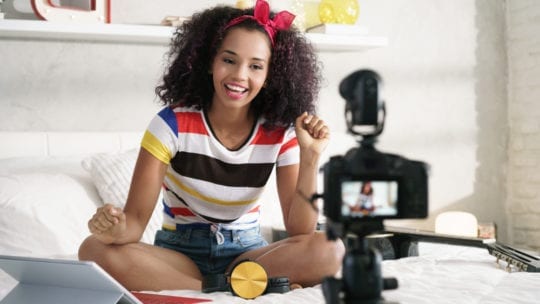
Maintaining valid influencer relationships for your brand will only continue to be a crucial media relations strategy in 2019. But in this time of bots and paid followers on social, what's the best way to make sure those relationships are on the level? How do you know you're working with an influencer whose digital persona, and engaged followers, are legit?
We asked some influencer marketing experts to find out.
On figuring out what to measure
Ryder Meehan, agency principal and co-founder of digital marketing firm Upgrow, explains that one mistake communicators make when entering into new potential influencer partnerships is not knowing what to measure. "Look beyond top-level metrics like followers and reach, but also at more nuanced qualitative insights," says Meehan. " If they have a lot of influence in fashion, they might not get the same impact for a beauty brand. Likewise, if they are promoting a different jeans brand every week then they could be too saturated."
Meehan recalls that one of his best-performing influencer partnerships was for a face wash product. It was promoted by a very popular YouTube influencer who was known for her makeup tutorials. Though she rarely promoted skincare brands, the face wash fit squarely within her area of expertise.
"Far too many folks assume impressions are the only thing to track," adds Danica Kombol, president of Atlanta's Everywhere Agency. "Wrong! We really try to go as far down the sales funnel as possible in tracking the success of a campaign. That requires having excellent tools in place to measure effectiveness." Kombol and her team at Everywhere often use the CreatorIQ platform because of the science it applies to verifying metrics.
"In measuring the impact of an influencer program," says Meehan, "traffic and conversions are always my primary metrics. Secondary metrics or data that help to understand why an influencer was successful or wasn't could be reach, engagement and follower growth. At the end of the day I'm looking for traffic and conversion growth with a positive ROI."
On finding authentic influencers and content in a sea of fakers
Krista Todd, VP of global communications at Logitech, emphasizes that PR pros shouldn't feel uncomfortable about checking an influencer's credibility during on-boarding. "Ask them upfront to provide prior work examples, screenshots of their dashboards and references," says Todd. "You wouldn't hire an employee without digging into references, why would you hire an influencer without doing the same thing? Read through the comments on their social channels. Spend time."
Kombol agrees that the human eye is one of the best tools to spot fakers. "A few bad apples should not spoil the whole bunch," she says. "True, there are more than a few influencers out there with inflated followings and bots responding “CUTE!” to every single Instagram post. Guess what? They’re easy to spot. We use a variety of data tools to vet every single influencer before we engage them on a campaign. We also actively resist the automation of influencer marketing because you need human science along with data science to source influencers."
Meehan agrees that the human eye makes for the best defense, and also uses the Twitonomy tool to see what countries the influencer's followers are in and how active they are. After the on-boarding, he scans the influencer's recent posts to see how much engagement they're getting.
He also stresses that a similarly keen level of discretion must be paid to the influencer's content. "Users are savvy these days and can sniff out an unnatural product placement a mile away. Watch or read the influencer's past sponsorships and ask yourself if you'd consider checking out the product to buy if you were in the target audience. The best influencers are picky about the brands they work with and are in it for the long term, so they need to keep their followers happy with good recommendations."
